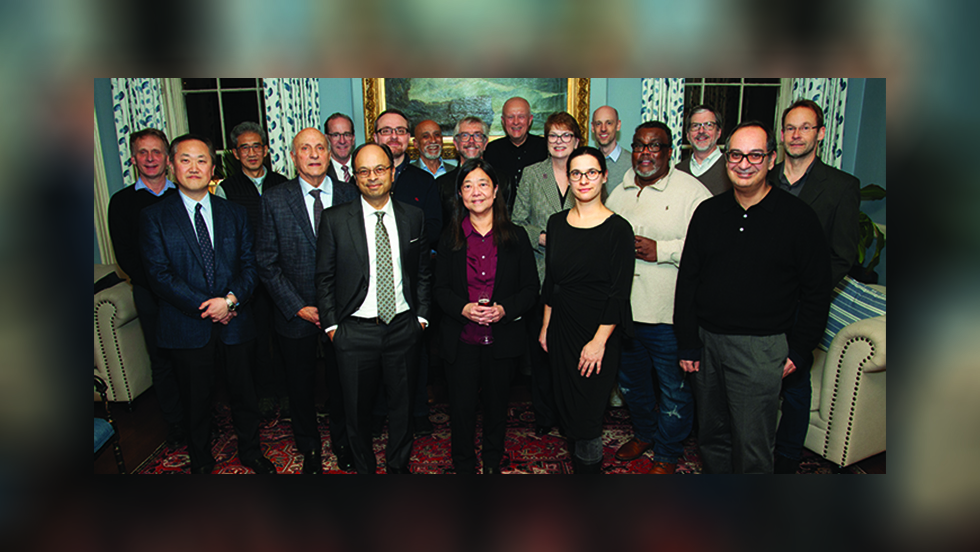
In January, RNA experts from around the world gathered at Brown to roll up their sleeves and get to work on a venture that many of them say will likely be bigger, more expensive, and more daunting than the Human Genome Project.
But the outcome of this effort, known as the Human RNome Project, will also be even more consequential for human health, offering clues to develop vaccines, unlock mysteries behind rare diseases, and discover treatments for some of humanity’s most intractable illnesses, like Alzheimer’s, diabetes, and many cancers.
“This is the first international effort on RNome,” said Vivian Cheung, MD, the lead organizer of the three-day working group meeting, the first of many to come. “The Genome Project had several of these planning meetings, and they have become famous by the location where they were done. There was a Bermuda convention, a Fort Lauderdale meeting. … So a little tongue-in-cheek, we’re hoping that this will become the ‘Rhode Island meeting.’”
The Human RNome Project aims to identify and quantify all RNAs and map their modifications, in both normal and diseased human cells and tissues. The mission is complicated by a lack of technology that can accurately read RNA molecules and, specifically, those modifications: tiny tweaks to the nucleotides that are critical to an RNA’s function. The COVID-19 vaccine, for example, was only possible due to a modification to the messenger RNA molecule. There are at least 170 known modifications, said workshop co-organizer Peter Dedon, MD, PhD.
“Everything’s got a modification. And that means they can get screwed up in many different ways for disease,” he said.
Visit Medicine@Brown to read the full story.